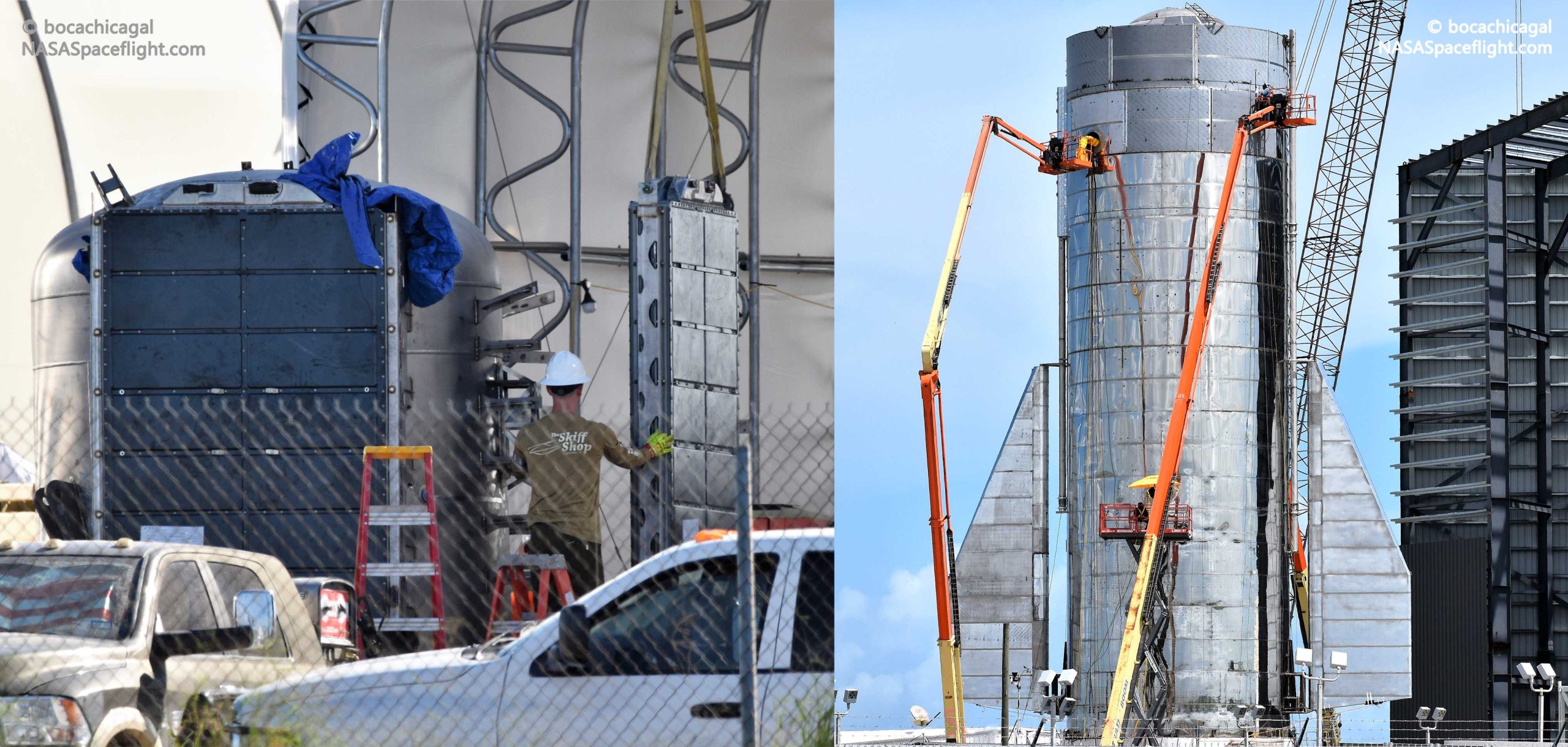
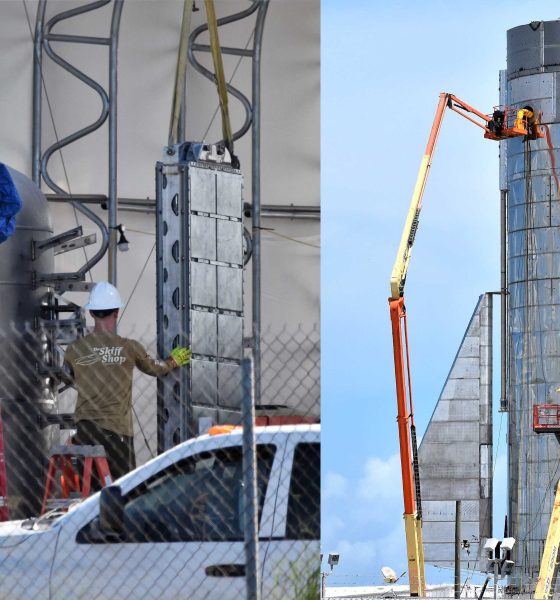
News
SpaceX is installing Tesla battery packs on its Starship MK1 rocket prototype
First noticed by NASASpaceflight.com forum member “exilon”, SpaceX appears to have selected off-the-shelf Tesla battery packs as the power storage method of choice for its Starship Mk1 prototype, currently in the midst of a busy period of integration
Potentially taken directly from Tesla Model S/X powertrains otherwise headed for recycling, SpaceX technicians have spent the last 24 or so hours attaching numerous battery packs to part of a Starship subsystem known as header tanks. This is the latest addition to SpaceX and Tesla’s relatively close relationship – the two have begun to work together to solve challenges with materials science, batteries, and more within the last 12-24 months.
While initially surprising, the appearance of battery packs quite literally taken from Tesla Model S/X vehicles or their Gigafactory assembly line actually makes a lot of sense. By using prepackaged, off-the-shelf battery systems with industry-leading power management capabilities, SpaceX is probably saving a huge amount of time, money, and effort. If the battery packs were already nearing the end of their useful automotive lives, the net cost could very well approach zero, aside from what looks like a minimal mounting brace. It’s possible that SpaceX has even pursued modifying and certifying large Tesla-derived battery packs for use on orbital Starship missions.
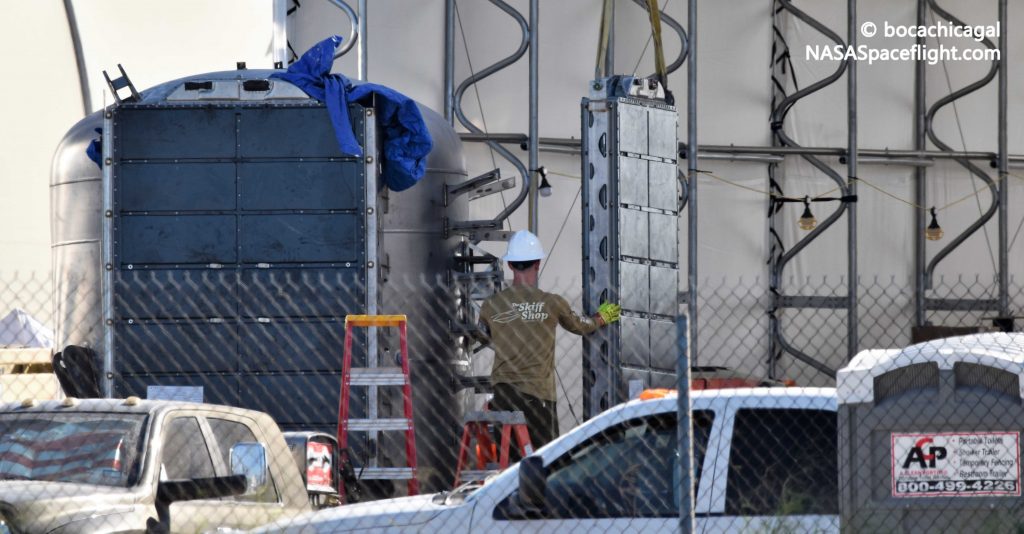
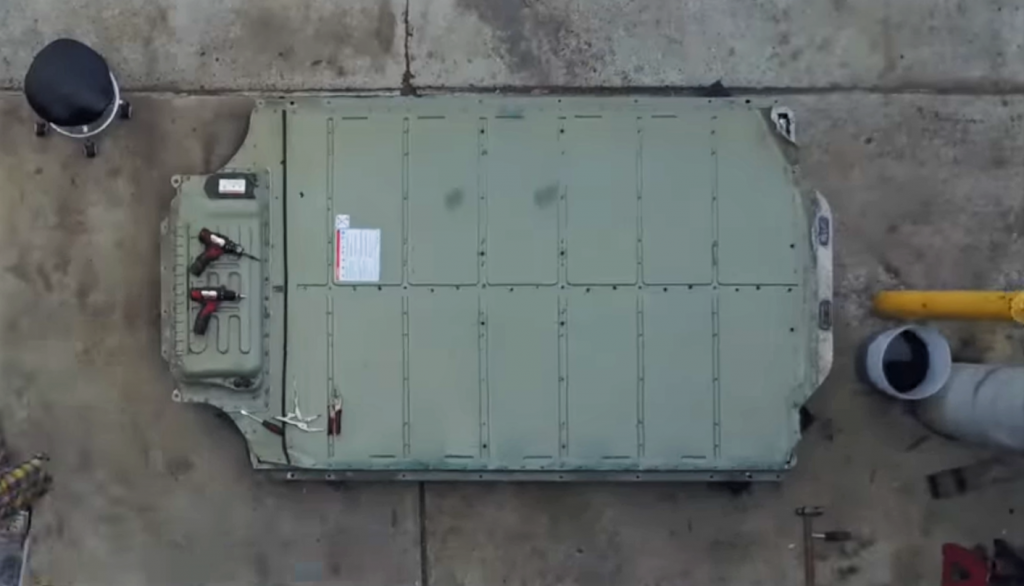
These battery packs were spotted by an eagle-eyed forum user who was first to recognize the hardware for what it likely was. Per the above photo, SpaceX appears to have joined two self-contained Tesla battery packs into single units that were then installed on a header tank. Knowing that the highest capacity Tesla offers is ~100 kWh, the 2×2 packs could store up to 400 kWh and offer instantaneous power output (ignoring thermal limitations) well into the megawatt (MW) range. It’s unclear if the first header tank also had batteries attached but SpaceX technicians began installing that tank inside Starship’s nose cone on the evening September 22nd. Tank #2 will likely follow in the next 24 hours per Musk’s indication that Starship Mk1 would be stacked to its full height on Wednesday.
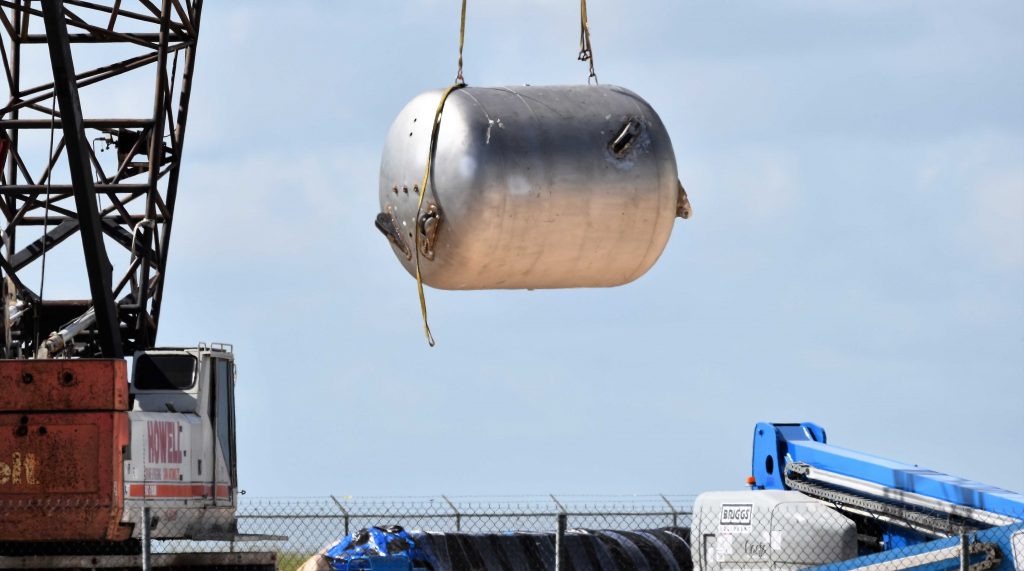
For unknown reasons, SpaceX is choosing to mount the ~1000 kg (2200 lb) battery pack pairs directly onto the outside of one of Starship Mk1’s two header tanks. These tanks compliment the rocket prototype’s main propellant tanks and are meant to serve as small reserves of fuel (methane) and oxidizer (oxygen) that can be pressurized independently. During dramatic in-space and in-atmosphere maneuvers, the g-forces exerted on Starship could easily find the vehicle’s propellant pushed away from the ‘bottom’ of its main tanks, creating bubbles or voids that can damage and destroy rocket engines if ingested.
Pressurizing the entirety of the main tanks (a cylinder measuring 9m by ~40m or 30×130 ft) is extremely impractical – hence the need for much smaller header tanks. Falcon 9 boosters are able to sidestep this issue because they are small and light enough (relatively speaking) that cold gas thrusters can efficiently generate the positive Gs needed to safely ignite its engines for recovery and landing maneuvers. Empty, Starship alone will likely weigh no less than 4-6 times as much as a Falcon 9 booster (~25 tons, 55,000 lb).
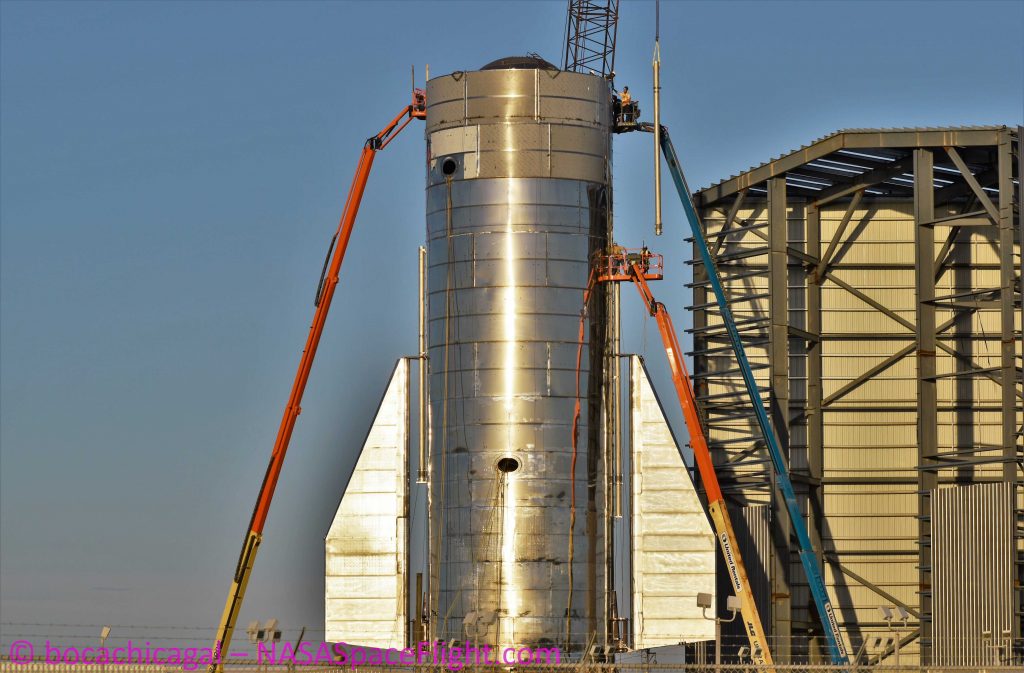
According to CEO Elon Musk, SpaceX has decided to install those header tanks in the very tip of Starship Mk1’s conical nose to help balance out the vehicle’s center of mass. As a side-effect, SpaceX will have to install feed lines that run the entire length of the spacecraft and protect them with steel aero-covers. It’s unclear if this design choice is necessitated by Starship’s early, prototypical form or if – once outfitted with crew quarters or a functional cargo bay – it’s possible that that added mass will serve as enough of a counterbalance to preclude the need for ballast in the nose.
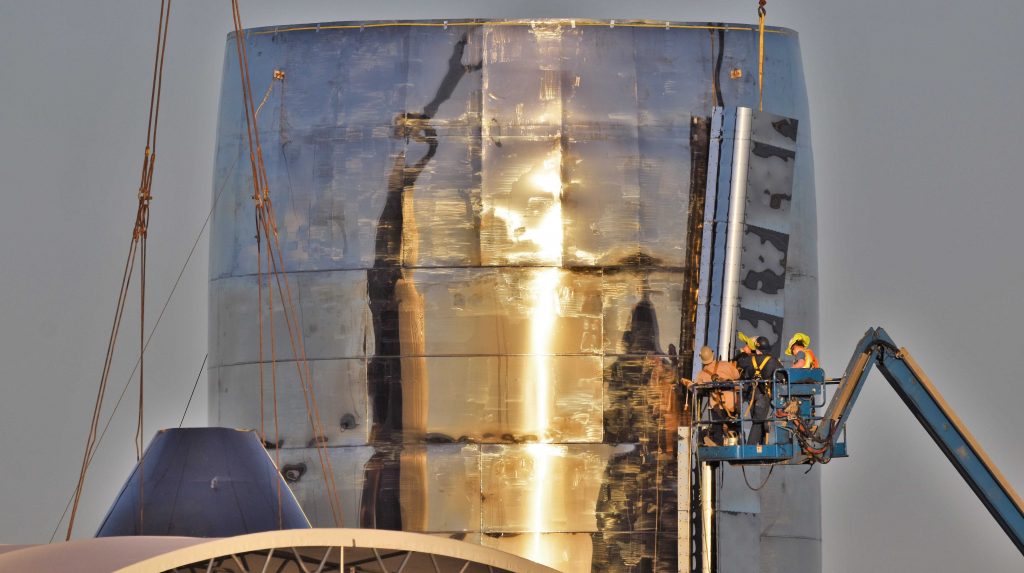
Musk posted a view inside an adjacent SpaceX fabrication facility in Boca Chica on September 23rd, showing a large row of staged steel sheets that will eventually be formed into aerodynamic shrouds for Starship Mk1’s raceways, fins, and wings.
Check out Teslarati’s Marketplace! We offer Tesla accessories, including for the Tesla Cybertruck and Tesla Model 3.

News
Tesla’s northernmost Supercharger in North America opens
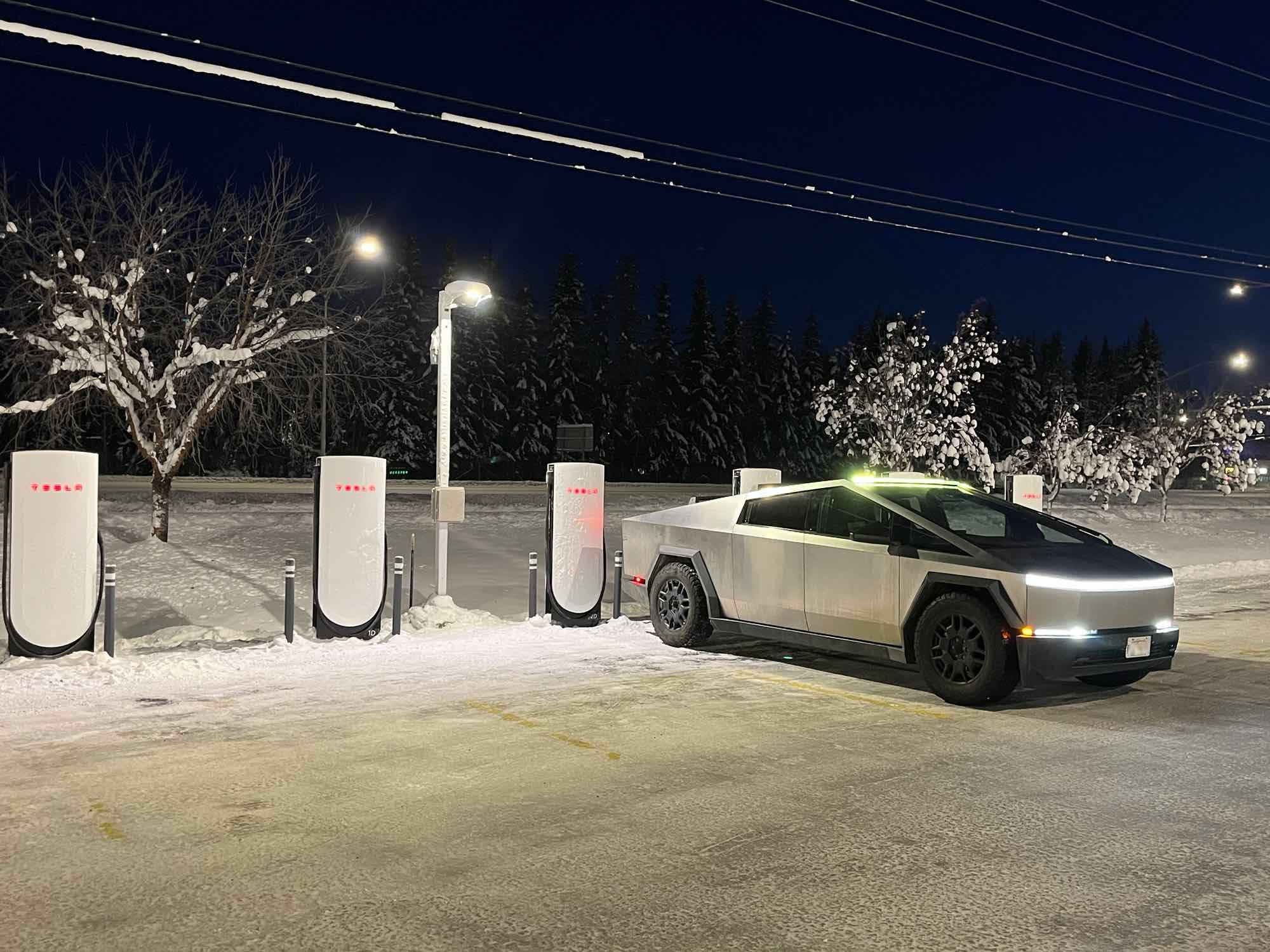
Tesla has opened its northernmost Supercharger in Fairbanks, Alaska, with eight V4 stalls located in one of the most frigid cities in the U.S.
Located just 196 miles from the Arctic Circle, Fairbanks’s average temperature for the week was around -12 degrees Fahrenheit. However, there are plenty of Tesla owners in Alaska who have been waiting for more charging options out in public.
There are only 36 total Supercharger stalls in Alaska, despite being the largest state in the U.S.
Eight Superchargers were added to Fairbanks, which will eventually be a 48-stall station. Tesla announced its activation today:
North America’s northernmost Supercharger Fairbanks, AK (8 stalls) opened to public. https://t.co/M4l04DZ6B5 pic.twitter.com/zyL6bDuA93
— Tesla Charging (@TeslaCharging) December 12, 2025
The base price per kWh is $0.43 at the Fairbanks Supercharger. Thanks to its V4 capabilities, it can charge at speeds up to 325 kW.
Despite being the northernmost Supercharger in North America, it is not even in the Top 5 northernmost Superchargers globally, because Alaska is south of Norway. The northernmost Supercharger is in Honningsvåg, Norway. All of the Top 5 are in the Scandanavian country.
Tesla’s Supercharger expansion in 2025 has been impressive, and although it experienced some early-quarter slowdowns due to V3-to-V4 hardware transitions, it has been the company’s strongest year for deployments.
🚨🚨 Tesla Supercharging had a HUGE year, and they deserve to be recognized.
🍔 Opened Tesla Diner, a drive-in movie theater with awesome, Chef-curated cuisine
🔌 Gave access to Superchargers to several EV makers, including Hyundai, Genesis, Mercedes-Benz, Kia, Lucid, Toyota,… pic.twitter.com/yYT2QEbqoW
— TESLARATI (@Teslarati) December 10, 2025
Through the three quarters of 2025, the company has added 7,753 stations and 73,817 stalls across the world, a 16 percent increase in stations and an 18 percent increase in stalls compared to last year.
Tesla is on track to add over 12,000 stalls for the full year, achieving an average of one new stall every hour, an impressive statistic.
Recently, the company wrapped up construction at its Supercharger Oasis in Lost Hills, California, a 168-stall Supercharger that Tesla Solar Panels completely power. It is the largest Supercharger in the world.
News
Tesla hints toward Premium Robotaxi offering with Model S testing
Why Tesla has chosen to use a couple of Model S units must have a reason; the company is calculated in its engineering and data collection efforts, so this is definitely more than “we just felt like giving our drivers a change of scenery.”
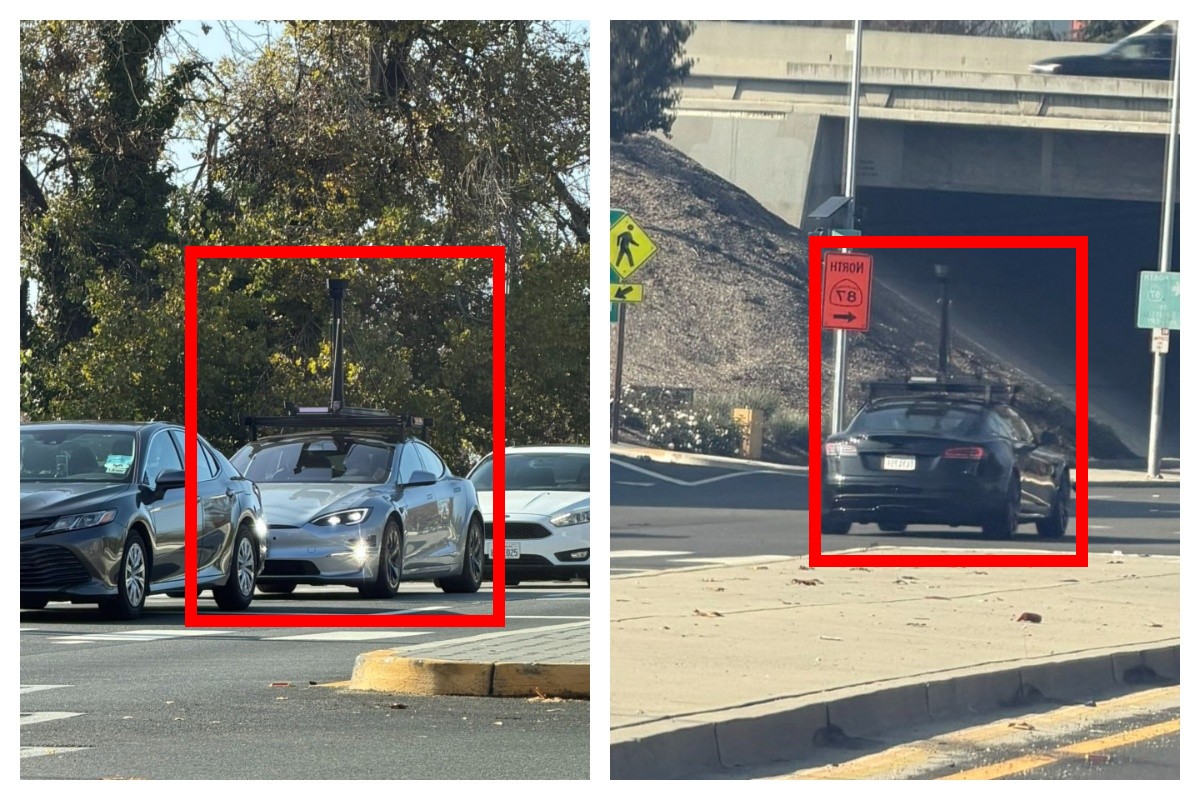
Tesla Model S vehicles were spotted performing validation testing with LiDAR rigs in California today, a pretty big switch-up compared to what we are used to seeing on the roads.
Tesla utilizes the Model Y crossover for its Robotaxi fleet. It is adequately sized, the most popular vehicle in its lineup, and is suitable for a wide variety of applications. It provides enough luxury for a single rider, but enough room for several passengers, if needed.
However, the testing has seemingly expanded to one of Tesla’s premium flagship offerings, as the Model S was spotted with the validation equipment that is seen entirely with Model Y vehicles. We have written several articles on Robotaxi testing mules being spotted across the United States, but this is a first:
🚨 Tesla is using Model S vehicles fitted with LiDAR rigs to validate FSD and Robotaxi, differing from the Model Ys that it uses typically
Those Model Y vehicles have been on the East Coast for some time. These Model S cars were spotted in California https://t.co/CN9Bw5Wma8 pic.twitter.com/UE55hx5mdd
— TESLARATI (@Teslarati) December 11, 2025
Why Tesla has chosen to use a couple of Model S units must have a reason; the company is calculated in its engineering and data collection efforts, so this is definitely more than “we just felt like giving our drivers a change of scenery.”
It seems to hint that Tesla could add a premium, more luxury offering to its Robotaxi platform eventually. Think about it: Uber has Uber Black, Lyft has Lyft Black. These vehicles and services are associated with a more premium cost as they combine luxury models with more catered transportation options.
Tesla could be testing the waters here, and it could be thinking of adding the Model S to its fleet of ride-hailing vehicles.
Reluctant to remove the Model S from its production plans completely despite its low volume contributions to the overall mission of transitioning the world to sustainable energy, the flagship sedan has always meant something. CEO Elon Musk referred to it, along with its sibling Model X, as continuing on production lines due to “sentimental reasons.”
However, its purpose might have been expanded to justify keeping it around, and why not? It is a cozy, premium offering, and it would be great for those who want a little more luxury and are willing to pay a few extra dollars.
Of course, none of this is even close to confirmed. However, it is reasonable to speculate that the Model S could be a potential addition to the Robotaxi fleet. It’s capable of all the same things the Model Y is, but with more luxuriousness, and it could be the perfect addition to the futuristic fleet.
News
Rivian unveils self-driving chip and autonomy plans to compete with Tesla
Rivian, a mainstay in the world of electric vehicle startups, said it plans to roll out an Autonomy+ subscription and one-time purchase program, priced at $49.99 per month and $2,500 up front, respectively, for access to its self-driving suite.
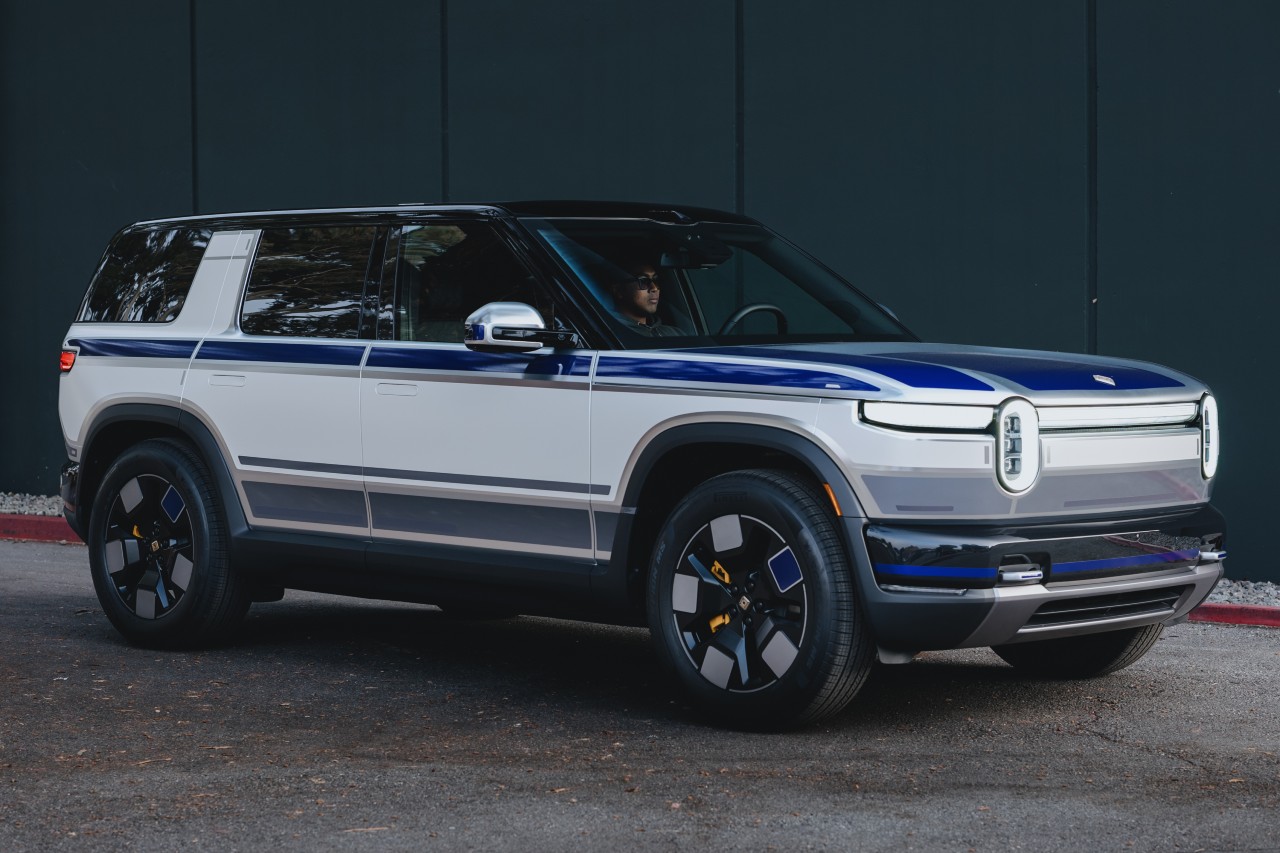
Rivian unveiled its self-driving chip and autonomy plans to compete with Tesla and others at its AI and Autonomy Day on Thursday in Palo Alto, California.
Rivian, a mainstay in the world of electric vehicle startups, said it plans to roll out an Autonomy+ subscription and one-time purchase program, priced at $49.99 per month and $2,500 up front, respectively, for access to its self-driving suite.
CEO RJ Scaringe said it will learn and become more confident and robust as more miles are driven and it gathers more data. This is what Tesla uses through a neural network, as it uses deep learning to improve with every mile traveled.
He said:
“I couldn’t be more excited for the work our teams are driving in autonomy and AI. Our updated hardware platform, which includes our in-house 1600 sparse TOPS inference chip, will enable us to achieve dramatic progress in self-driving to ultimately deliver on our goal of delivering L4. This represents an inflection point for the ownership experience – ultimately being able to give customers their time back when in the car.”
At first, Rivian plans to offer the service to personally-owned vehicles, and not operate as a ride-hailing service. However, ride-sharing is in the plans for the future, he said:
“While our initial focus will be on personally owned vehicles, which today represent a vast majority of the miles to the United States, this also enables us to pursue opportunities in the rideshare space.”
The Hardware
Rivian is not using a vision-only approach as Tesla does, and instead will rely on 11 cameras, five radar sensors, and a single LiDAR that will face forward.
It is also developing a chip in-house, which will be manufactured by TSMC, a supplier of Tesla’s as well. The chip will be known as RAP1 and will be about 50 times as powerful as the chip that is currently in Rivian vehicles. It will also do more than 800 trillion calculations every second.
Meet the Rivian Autonomy Processor.
Fast, smart, scalable and purpose-built for autonomous driving and the world of physical AI. Hitting the open road in 2026. pic.twitter.com/0wYXi5WKy7
— Rivian (@Rivian) December 11, 2025
RAP1 powers the Autonomy Compute Module 3, known as ACM3, which is Rivian’s third-generation autonomy computer.
ACM3 specs include:
- 1600 sparse INT8 TOPS (Trillion Operations Per Second).
- The processing power of 5 billion pixels per second.
- RAP1 features RivLink, a low-latency interconnect technology allowing chips to be connected to multiply processing power, making it inherently extensible.
- RAP1 is enabled by an in-house developed AI compiler and platform software
As far as LiDAR, Rivian plans to use it in forthcoming R2 cars to enable SAE Level 4 automated driving, which would allow people to sit in the back and, according to the agency’s ratings, “will not require you to take over driving.”
More Details
Rivian said it will also roll out advancements to the second-generation R1 vehicles in the near term with the addition of UHF, or Universal Hands-Free, which will be available on over 3.5 million miles of roadway in the U.S. and Canada.
More than any other feature, our owners have asked for more hands-free miles.
With Universal Hands-Free, you can now enjoy hands-free assisted driving on any road with clearly defined lanes. That’s roughly 3.5 million miles in the U.S. and Canada.
Look for it in our next… pic.twitter.com/ZFhwVzvt6b
— Rivian (@Rivian) December 11, 2025
Rivian will now join the competitive ranks with Tesla, Waymo, Zoox, and others, who are all in the race for autonomy.








